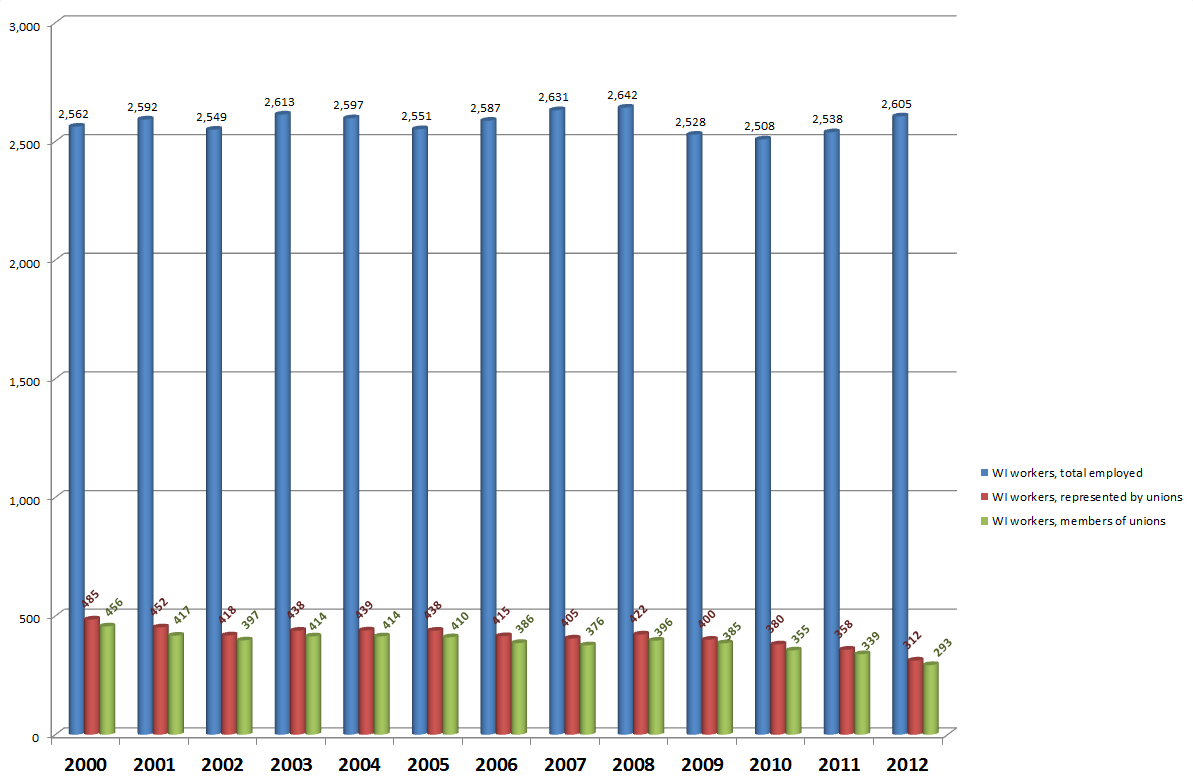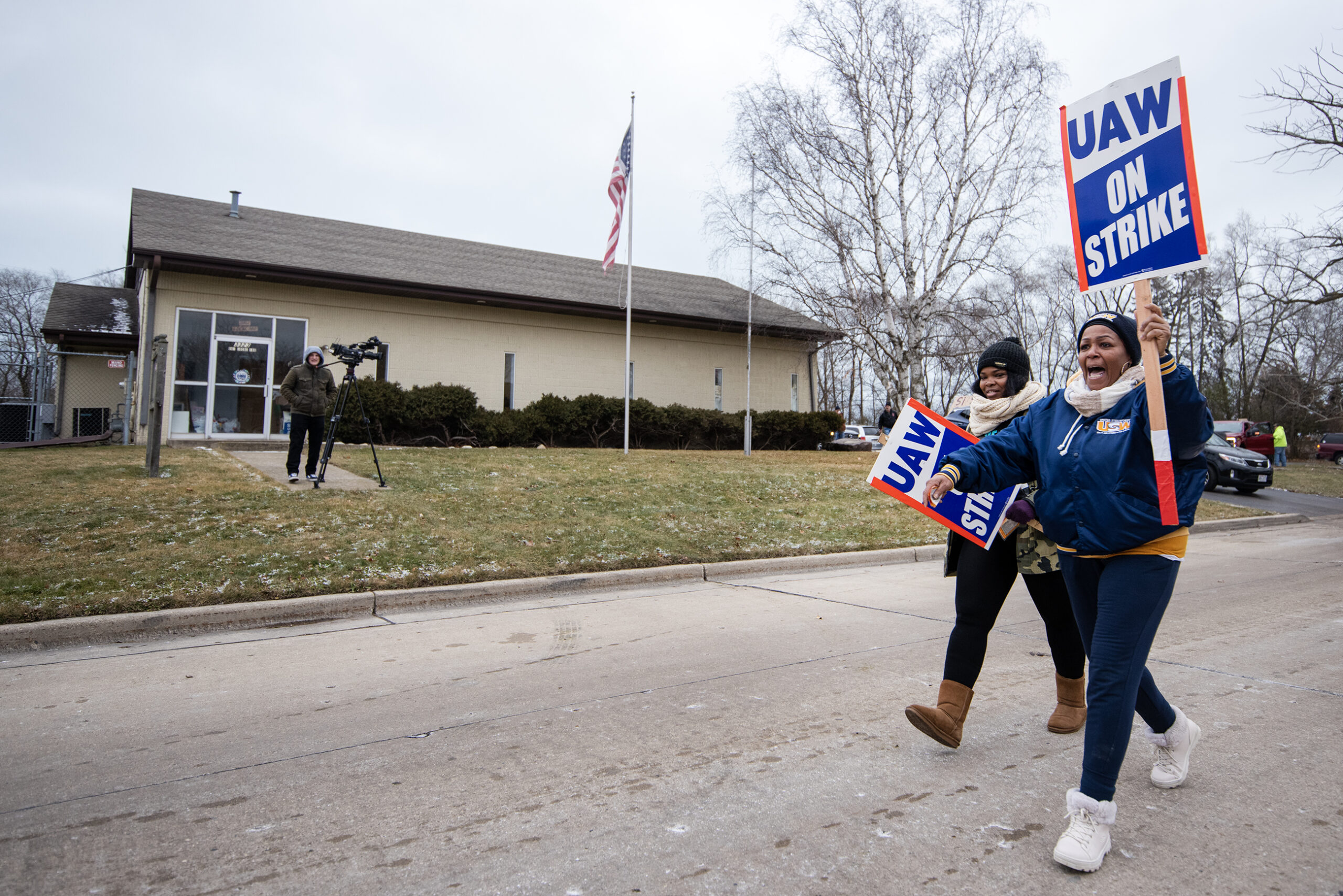The number of union workers in Wisconsin and the rest of the country continues to decline, according to the Bureau of Labor Statistics. (link, PDF)
Last year, 11.3 percent of U.S. workers belonged to a union. That’s half a percentage point lower than in 2011.
Wisconsin’s union membership fell to about 11 percent last year. That’s lower than 2011, when union members made up more than 13 percent of the state’s workforce.
Stay informed on the latest news
Sign up for WPR’s email newsletter.
American Federation of Teachers-Wisconsin President Bryan Kennedy says the decline is because of Act 10, which limits collective bargaining and places rules on union dues. “The union can’t bargain all the things they used to bargain and membership for those who still have their base wages negotiated by a union, they don’t have to pay for that. If you could get something for free, wouldn’t you?”
Union workers do make more money on average than nonunion workers. Wisconsin State AFL-CIO Secretary-Treasurer Stephanie Bloomingdale says she’s worried that over time, wages could go down if there are fewer union workers, “When you have less and less people with the ability to speak out and say, ‘You know, company, you’re making a good profit here.’ All we want is for the workers to have a fair share of the overall pie.”
Bloomingdale says the lack of bargaining contributes to the growing wage disparity between the workers and the company owners and shareholders.
SEIU Wisconsin State Council President Mike Thomas says he’s concerned workers who are no long represented by unions may have a harder time moving up from the poor working class to the middle class.
Wisconsin Public Radio, © Copyright 2024, Board of Regents of the University of Wisconsin System and Wisconsin Educational Communications Board.






